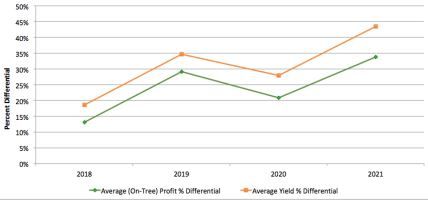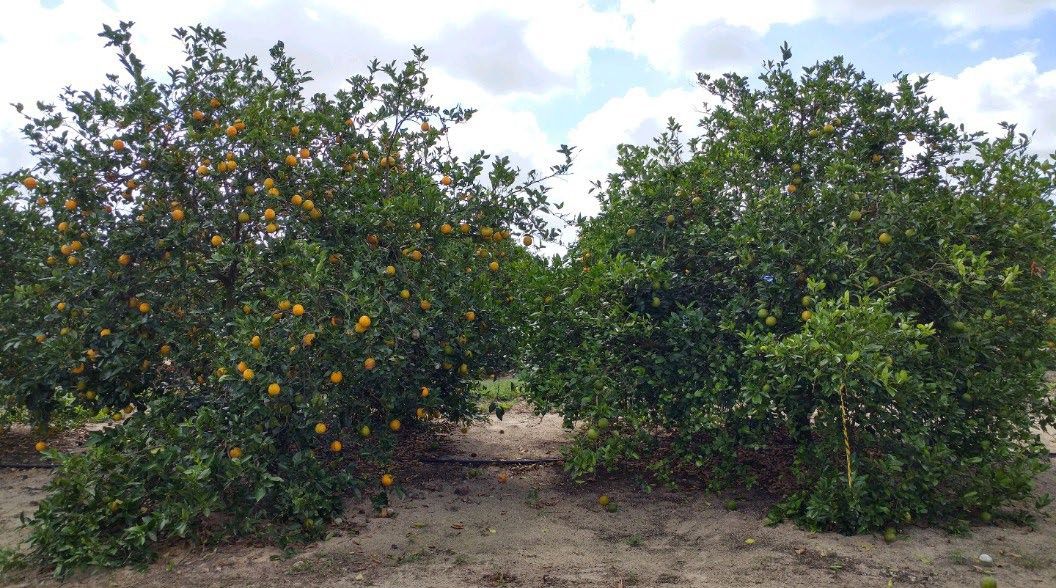Gibberellic Acid (GA3, referred to as GA in this document)
- Commercially available for exogenous foliar spray on citrus
- Used in Florida citrus industry for decades to improve fruit set, improve fruit quality, delay harvest, and reduce drop (see UF/IFAS Florida Citrus Production Guide: Plant Growth Regulators, https://edis.ifas.ufl.edu/publication/hs1310)

Credit: UF/IFAS
Orange line: Average yield percent differential between the GA- treated trees and the control, which ranges from 19% to 44%.
Green line: Average (on-tree) profit differential estimated using the average prices for the 4 seasons; ranges from 13% to 34%, suggesting GA use can be profitable.
GA Valencia Orange Field Trial (2016–2021)
Setup
- 10-year-old ‘Valencia’ on Swingle
- GA applied monthly from September to January for five consecutive years
- 10 fl oz per acre (ProGibb® LV plus) + 0.125% surfactant (Induce®)
- 1 gallon per tree spray volume
Findings
- GA treatment resulted in synchronized and reduced flowering.
- GA-treated trees showed better canopy growth (see picture on back sheet).
- GA treatment increased average fruit size by 5%.
- GA-treated trees had 15%–20% lower pre-harvest fruit drop.
- With GA-treatment an improvement in yield was observed (see graph).
- On average (4-year yield) GA-treated trees produced about 50 lb more fruit per tree than control.
- GA treatment resulted in fruit peel remaining green (picture on back), which can be a concern for fresh fruit.
Table 1. 4-year average yield of untreated and GA-treated trees.
Suggested Use Pattern for Sweet Oranges
- For Valencia: September–January (five monthly applications)
- For Hamlin: August–October (three monthly applications)
- Plan for a 3-to-4-month gap between last application of GA and harvest
- 10 fl oz ProGibb® LV plus per acre per application or GA 20 g a.i. per acre per application
- 0.125% surfactant (nonionic, low foam; Induce®)
- Spray volume: 125–150 Gal/A (good spray coverage)

Credit: UF/IFAS

Credit: UF/IFAS
Key Findings
- Another tool in the citrus tree health management toolbox.
- GA is available for use in FL citrus.
- GA can improve fruit set, development, and yield.
- Application time is critical.
- GA can slow peel color and Brix development.